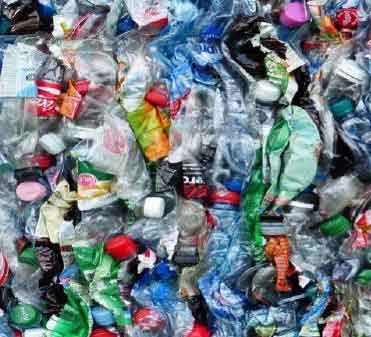Packaging plays an integral role in food. It provides a means of marketing and protection from things like dirt and bacteria, as well as security to indicate if a product has been tampered with.
The design of food packaging isn’t usually tasked to research and development teams. Instead, the profession of designing food packaging is called packaging engineering.
Packaging engineers are responsible for managing the process and packaging development process from implementation into production. This profession is an important one for the manufacturing world because almost all foods are packaged in some sort of way. If it wasn’t for packaging engineers our grocery stores would look a lot different from what they are right now!
Packaging engineers design and test food packaging

Packaging engineers design, test, and carry out packaging designs for food products. They begin by determining the characteristics of the product being packaged. These characteristics include pH, the state of matter, the temperature it will be stored at and the product’s shelf life.
In the next step, packaging engineers develop ideas for what the packaging might look like.
They might start by sketching the design on paper or making the blueprints on the computer. The engineers consider the characteristics of the product and how the product will be marketed.
Once they are happy with a design, they create a physical version of the design – a prototype. These prototypes then undergo performance testing. For example, shrink film might be tested for tensile strength or thickness. The engineers keep trying prototypes until they find the design that works.
Overall, this job involves a lot of trial and error!
Packaging engineers typically graduate with an engineering degree
Packaging is a very specialized field in engineering, but surprisingly, there are a lot of programs which offer this specialization. Students don’t just learn about food packaging but a wide range covering non-food packaging such as packaging for electronics.
Packaging science majors begin with courses related to the general sciences, as it provides a solid knowledge foundation. In the later years, they focus on concepts such as packaging design theory, polymer science and mechanical properties of packaging.
Alternatively, some packaging engineers go to school for other types of engineering like mechanical or environmental. These programs also provide transferable knowledge.
Professionals looking to be certified in packaging technology can seek accreditation through the Institute of Packaging Professionals. This accreditation shows a commitment to the excellence of the packaging profession.
They offer two levels of certification: Certification Professional in Training (CPIT) and Certified Packaging Professional (CCP). The CPP require individuals to have at least six years of experience, pass both an essay test and multiple choice as well a résumé of activities.
The CPIT is available to college and university students.
Packaging engineers collaborate with other teams
Packaging engineers work as part of a group in a company who want to ensure a product succeeds. Packaging engineers work closely with R&D, purchasing, engineering and marketing to create the perfect package. Outside companies are included as well.
R&D designs the food product, purchasing sources the materials needed, process engineering designs the machinery the product runs on and sales/marketing teams sell the product.
Overall, these teams work together, building strong relationships and open channels of communication.
Packaging engineers are heavily involved in cost-saving projects and environmental

It’s one thing to design a package which performs a specific job, but it’s another to design it in a cost-saving and environmentally-friendly way. The margins on food products are small and packaging plays a part in a product’s overall price. New technologies are constantly being produced, creating plenty of new possibilities for improving existing packaging.
Packaging engineers continuously research new materials and processes to see if they can include them in future projects. Companies are always looking to reduce the cost of making a product while reducing their environmental footprint.
Packaging engineers are knowledgeable about packaging equipment
The materials used for packaging are not the only thing that needs to be considered when designing packaging. Engineers need to understand the machines used in food packaging lines. Becoming knowledgeable includes actively participating in equipment selection processes and contacting equipment suppliers for specifications. You can design the most creative packaging, but if it can’t run properly on a line, then it simply won’t work.
Packaging engineers must manage multiple projects simultaneously
There are new food products coming out every day and that means the workload of a packaging engineer can become quite hectic. Packaging engineers must be efficient with their time and have the capability to work on multiple projects simultaneously.
Deadlines are present on the job and it takes time to produce and test prototypes. It is critical that they are organized to meet their clients’ demands in a timely manner.
Packaging engineers follow packaging laws
Engineers must work ethically by ensuring that the packages they design do not mislead customers, with respect to the quality and quantity of the product.
Engineers are not allowed to use materials that impart any substance to the contents which may be harmful to the consumer of the food. By the end of the process, all final designs must follow the requirements as set out by the Consumer Packaging and Labelling Act, which provides packager requirements that ensures that consumers make informed purchasing decisions. In the United States, this falls under the Food and Drug Act.
Packaging engineers are problem solvers, creative and have an attention for detail
As with any occupation, there are certain sets of skills which will aid you better than others. For a packaging engineer, these skills include:
- Problem solving – Packaging engineers troubleshoot new and existing packaging problems which might arise from areas, such as material costs and processes. To solve these problems, they must have the ability to problem solve in a creative, timely, and cost-effective manner.
- Creativity – As a packaging engineer, being able to come up with ways to design creative packaging is important because packaging plays a role in enticing customers to buy a product
- Attention to detail – This skill is essential for this profession because if a small detail is missed, it can result in a failure of a final product design.



